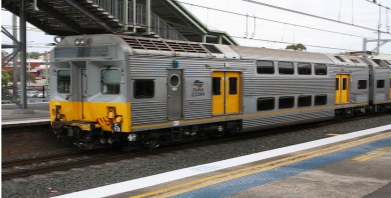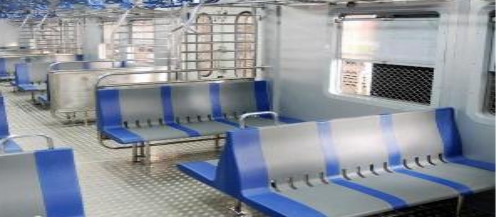- EN 441 stainless steel flat bar Hot rolled / cold drawn
- STS304L stainless steel round bar
- Stainless Steel Hot Rolled Flat Bar
- ISO Stainless Steel Angle Bar
- straight cut stainless steel wire sus304
- 304 bright soft annealed stainless steel wire
- 304L bright soft annealed stainless steel wire
- Stainless Steel Wire
- AISI316 stainless steel round pipe/tube
- 300 Series grade stainless steel round pipe
- AISI/SUS stainless steel pipe/tube cold drawn
- ASTM A249 stainless steel round pipe

The use of stainless steel material for railway
Inquiries : 153 - 2016/1/5 15:53:17
The use of stainless steel for trains goes back nearly three quarters of a century. It was durability and ease-of-maintenance considerations that tipped the balance towards stainless steel. With design lives of often more than 40 years, the application of stainless steel for train carriages was a highly worthwhile choice, due to the corrosion-resistant characteristics of the steel.
Over the years, rail technology has developed – and so has stainless steel. The refinement of metallurgical processes has further improved the uniformity and corrosion-resistance of proven chromium-nickel stainless steels. The range of mechanical treatments to further enhance their mechanical properties has been extended. New grades have been developed, including chromium-manganese types, which combine cost reduction with high mechanical strength. Ferritic stainless steels have given rail manufacturers new and particularly cost-effective options.

Invented in the early 20th century, stainless steels were soon applied to the rail industry. The 1930’s brought widespread use of stainless steel for rail coach bodies. Weight reduction became a priority and laid the ground for levels of speed and comfort that had not been experienced before. Especially in North America, stainless steel became the preferred material for rail coaches.
Although stainless steel is neither the lightest of materials nor the least expensive, both manufacturers and operators soon discovered that its outstanding long-term corrosion resistance provided maintenance and cost advantages. The fact that painting became redundant made stainless steel even more attractive. However, it was also a marketing issue. Long-distance rail travel was positioned as a modern, technologically advanced option for the demanding customer and stainless steel was an icon for this idea.
Much of the enthusiasm for stainless steel has been maintained over the decades, both for technical reasons and as a matter of aesthetic preference. Stainless steel is equally present in metro, commuter and long distance-trains to the present day. In many parts of the world, notably in North America, early experiences with stainless steel have influenced the preference of railway operators, rail-coach manufacturers and passengers alike. Unpainted, profiled stainless steel panels continue to be the “normal” material.
Besides aesthetic criteria, safety considerations are increasingly taken into account. Although serious collisions are very infrequent these days, higher operating speeds increase the likelihood of injury when they do occur. Many rail companies have therefore chosen to construct carriages from austenitic stainless steel, in preference to alternative materials such as carbon steel and aluminium alloys. This choice carries a unique safety-related benefit. First and foremost to the high energy absorption made possible by the unique work-hardening properties of austenitic stainless steels. If the assembly is properly designed, stainless steel tubular sections will fail in compression – not in buckling. The inherent material strength increases as the speed and intensity of the deformation increases, thus maximising energy absorption.

Stainless steel is so widely used, and the application of it in railways is a prime example of how the stainless steel has created beneficial impacts like reducing weight and increasing speed and safety aspects, increasing the overall practicality of rail lines.

